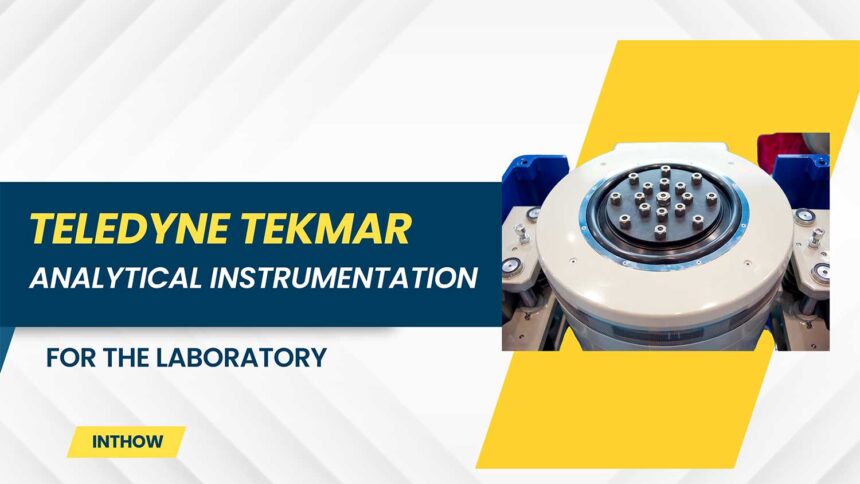Teledyne Tekmar develops and manufactures analytical instrumentation for use in laboratories.
Their offerings include gas chromatography sample introduction, total organic carbon and volatile organic compound analyzers, high-throughput purge and trap sample concentration, sample automation systems and static/dynamic headspace analysis.
Volatile Organic Compounds
VOCs (volatile organic compounds) are toxic gases released into the environment from both natural and man-made sources, such as gasoline or oil spills. Others, like dichloromethane and trichloroethylene are released by certain dry cleaners and industrial processes and are also released as VOCs into the atmosphere.
VOC exposure can cause nose, eye, and throat irritation as well as nausea. Longer-term exposure can even be carcinogenic. VOC sensitivities vary among individuals; children and elderly people are particularly at risk. You can click the link: https://www.health.state.mn.us/environment/air/toxins/voc to learn more about VOCs.
VOCs, with their low boiling point and quick evaporation at room temperature, can be found in numerous household and commercial products like paints, glues, solvents and insecticides.
Furthermore, VOC emissions come from combustion of fossil fuels, automobile exhaust and industrial processes. VOC emissions are formed via sunlight reaction with nitrogen oxides to form tropospheric ozone (ground-level smog).
This form of air pollution interferes with natural atmospheric processes by blocking sunlight’s warming effect or by blocking UV radiation absorption that causes global warming effect of natural atmospheric processes. You can learn more about global warming by clicking the link.
Total Organic Carbon
Total organic carbon (TOC) is an indicator of organic contamination in water. Its importance can be seen across numerous industries such as microelectronics.
TOC’s also present in pharmaceutical water treatment systems where ultra-pure levels are needed, municipal treatment plants where high TOC has been linked with disinfection byproducts and bacterial regrowth, and municipal distribution networks with elevated TOC levels linked to disinfection byproducts and bacteria regrowth in distribution networks.
Organic carbon is added to soil through microbe activity, animal excretions and decomposition of plant residues. It contributes to numerous soil properties, such as color, cation exchange capacity and nutrient turnover and stability.
TOC analysis is an integral component of municipal and environmental water quality programs as well as many industrial processes, and a common practice used to check medical devices prior to sterilization or cleaning in healthcare facilities and for single-use and reusable clean-in-place equipment used in manufacturing facilities.
Furthermore, TOC measurement also serves as an indicator for levels of organic contaminants present in wastewater streams – this allows remediation efforts while minimizing costs.
Total Nitrogen
Nitrogen is essential for plant growth, yet in excess it can have disastrous repercussions for the environment.
An excessively high nitrogen concentration leads to eutrophication which leads to excessive vegetation growth and reduced biodiversity; additional secondary particles known as PM10 and PM2.5 formation contribute to air pollution leading to respiratory health problems for those exposed.
Nitrogen levels in wastewater can be measured using concentrations of nitrates, ammonia and organic nitrogen-containing compounds. Total nitrogen (TN) is often used as an indicator of water quality and serves an integral function when treating municipal waste effluents.
Nitrogen can typically be measured using the Kjeldahl (or Koroleff) method, depending on which technique is chosen, to calculate total nitrogen.
Total nitrogen may either be calculated using Trivalent Nitrogen or Nitrogen-A as determined by directly persulfate digestion; while trivalent nitrogen includes proteins and peptides bound in trivalent form such as those found in proteins and nucleic acids as well as ammonium compounds found quaternarily.
Consequently, changing methods can result in different trends over time – this is particularly useful when monitoring waters which may result in re-suspension occurring through time periods when monitoring is ongoing or when measuring sediment re-suspension.
Pharmaceutical
Pharmaceutical industries are highly competitive and innovative. Producing and selling medicines contribute significantly to global economies, with people all around the world looking forward to safe and effective therapies being delivered via pharmaceutical companies.
These companies’ high level of innovation brings additional environmental challenges. As more legislation requires pharmaceutical companies to be held responsible for any unused or expired drugs they produce, reengineering of supply chains as well as designing innovative remanufacturing processes is now needed in order to meet this growing demand for corporate accountability.
Climate impact of pharmaceutical and medical technology industries has long been recognized, with most leading global pharmaceutical and medical technology companies making commitments to lower carbon emissions in various ways.
Consumers who prioritize environmental action have a part to play in this industry. Some companies, like Teledyne Tekmar, have made commitments to reduce carbon emissions significantly by 2040. You can always check a company’s homepage to find out more about their environmental efforts.
Companies can contribute both to cutting greenhouse gas emissions while improving global health through greater action taken across their sector – including energy efficient labs, zero emission buildings and low carbon transport and production operations. This is beneficial for the environment.









